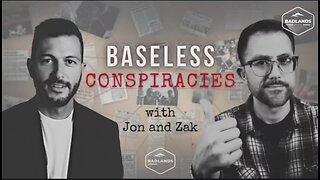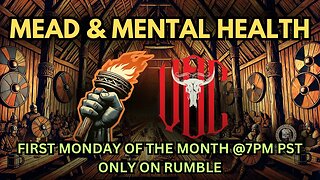Premium Only Content

Fake Science
How to Detect a Fake Science News Story
Often, I have been asked, "How can you tell if a science story isn't legitimate?" Here are some red flags:
1) The article is very similar to the press release on which it was based. This indicates whether the article is science journalism or just public relations.
2) The article makes no attempt to explain methodology or avoids using any technical terminology. (This indicates the author may be incapable of understanding the original paper.)
3) The article does not indicate any limitations on the conclusions of the research. (For example, a study conducted entirely in mice cannot be used to draw firm conclusions about humans.)
4) The article treats established scientific facts and fringe ideas on equal terms.
5) The article is sensationalized; i.e., it draws huge, sweeping conclusions from a single study. (This is particularly common in stories on scary chemicals and miracle vegetables.)
6) The article fails to separate scientific evidence from science policy. Reasonable people should be able to agree on the former while debating the latter. (This arises from the fact that people ascribe to different values and priorities.)
7) The article ties the research to something only tangentially related. (For example, stories on infectious disease often try to highlight the application to bioterrorism.)
8) The article is based on research from a journal that nobody has heard of.
9) The article is about evolutionary psychology.
10) The article is from the Daily Mail, Huffington Post, Mother Jones, Natural News, or any number of environmentalist, health activist, or food fad websites.
Separating real news from fake news is one of the bigger challenges facing our society in 2017. A recent poll reveals that 84% of Americans think fake news may be hurting the country. We must figure out a solution before it gets any worse.
-
 1:56:17
1:56:17
Badlands Media
11 hours agoBaseless Conspiracies Ep. 127
49K22 -
 1:05:32
1:05:32
Donald Trump Jr.
11 hours agoNews Not Noise, Live with Power the Future's Daniel Turner | TRIGGERED Ep.231
160K81 -
 28:01
28:01
Side Scrollers Podcast
4 hours agoNEW SERIES! Smash JT Has a Full-On Meltdown | Nerd Duel ft. Lady Desiree & You, Me & The Movies
23.2K2 -
 2:13:28
2:13:28
I_Came_With_Fire_Podcast
6 hours agoMEAD & MENTAL HEALTH WITH I CAME WITH FIRE AND VOC!!!
26.4K3 -
 1:10:04
1:10:04
John Crump Live
3 hours ago $1.77 earnedYes I talked To The ATF
23.4K3 -
 LIVE
LIVE
Amish Zaku
6 hours agoVerDanceKey Warzone - Birthday Fun
323 watching -
 LIVE
LIVE
NeoX5
3 hours agoKhazan: The Road Less Taken | Part 5-2 | Rumble Studio | Rumble Gaming
176 watching -
 LIVE
LIVE
TwinGatz
9 hours ago🔴LIVE - He Is Doing His Best | ARMA Reforger
336 watching -
 54:40
54:40
LFA TV
13 hours agoSee God in the Trade War | TRUMPET DAILY 4.7.25 7PM
49K11 -
 1:18:30
1:18:30
Sarah Westall
6 hours agoNew Study: EMFs Literally Put You into a Brainwave Cage; Reclaiming your Mind w/ Ian & Philipp
66.5K17